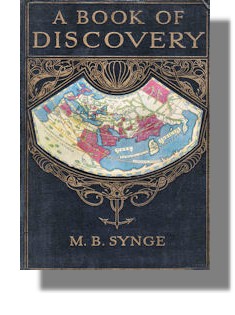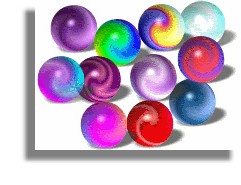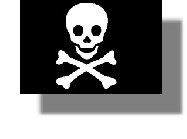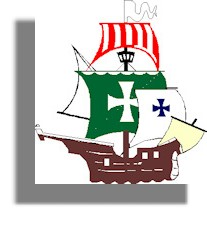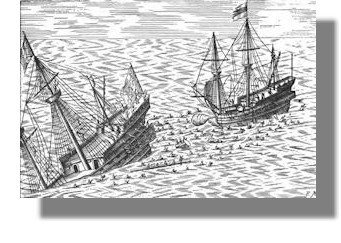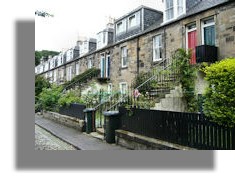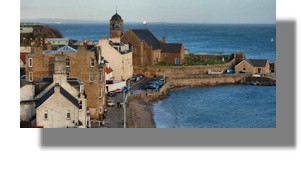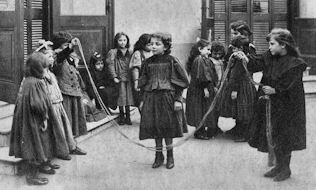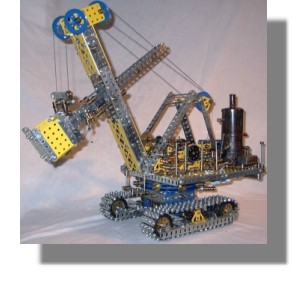Scottish Memory Lane - Toys and Games
This is the section of "Memory Lane" that focuses mainly on the toys and games that we played with when growing up in Scotland in the late 1900s. The aim is to stimulate readers to recall and write about events, incidents and things that they experienced while in Scotland at that time so that they can be read by the visitors to the Rampant Scotland pages. (There is more background on the Index Page for this section of the Rampant Scotland site.If you would like to contribute to these "Memory Lane" pages please send an email with your recollections to Scottie@RampantScotland.com. Depending on the volume of emails, it may not be possible to include all contributions and some may have to be reduced in size. If you have any non-copyright illustrations you want to include, feel free to attach these - but they are not essential.
Recently added stories have
placed beside their title.
Game Names in Crieff, Perthshire

Just to comment on games: I never heard of peevers/ hopscotch for in Crieff in Perthshire it was called poachy or poachie (pronounced as in poached egg..) Marbles we used to call them nungks. You placed your nungk in the circle with your opponents, or there could be more than one and then you played the game as you said. Another variation was to play chasey or chasie against one person, no circle, in the gutter up and down the street. You first asked, chasey-funny or chasey-keepy? - the latter meant you kept what you hit.
Jimmy - now in Holland
Buccaneers!
I mentioned before learning to play street footbal, but there were many games we played on the street that I learned as I grew up. There was leave-o (a variation on "tag" that originated in New York in the early 20th century). In another game we threw a tennis ball at the other players and when thay were hit, they were 'oot'!
I also rememember playing different games of marbles, one of which was to mark a circle in the dust at the kerb, place a lot of marbles in it, and then, from a fixed position, using your thumb to shoot a marble at the ring, try to scatter as many as posible out of it, which you were then allowed to keep. These were played in the summer, and during the winter we played board games in somebodys' house. Since you then continued there were plnty of opportunties to lose them all again!
Other games I remember were ludo, monopoly, snakes and ladders, and Cluedo. I also recall playing a game in the home of one of my football teams members, whose name was Willie (Junior) Omand. His dad was a director on the governors board of Queens Park Amateurs of Hamden fame! Willie played for Scotland at the first Olympic gamesbecause the games were strictly for amateurs at that time and Queens Park were the highest level of amateur football players in Scotland, and so the whole team represented Scotland. Willie later became president of Queen's Park Football Club.
If I remember correctly, the game we played at his house was called 'Buccaneer'. Buccaneers were 'legalised' pirates during the war with Spain over who had the right to what was called at that time the Spanish Main. The game board for Buccanneer was rather small, and the little plastic ships didn't look like the old sailing ships, and the game did not last long.
I was intrigued with the idea, however, and decided to make my own version of a game that would involve much more. The result of this was a board that was 4 feet. by 4 feet, divided into 1 inch squares, with coastal areas on the East and West sides of the board, and a small Arctic area to the North. I made a number of three masted sailing ships with paper sails, and flags to show if they were pirates, merchants, or navy! There were a number of ports on the coastal areas on the eastern side, a treasure island out in the southern seas, and on the western coast and a trail leading to an Elephants' Graveyard!
There were special squares as in monopaly, with cards for them, for the Spanish Main, treasure Island and the graveyard, and rules for battles, boarding ships and capturing them, and the crews of the ships, which were represented with little pieces of matchsticks that counted as two crewmen, and finally, out in the ocean a Desert Island where you could rescue seamen who had been stranded. Needless to say, the game could be played for hours, with battles between ships, where the Navy had extra powers, and all that was required was throwing two dice from a little jar. I carved all the ships from willow wood (old cricket bats), the treasure was small bits of brass to represent gold, and the ivory for the elephant graveyard was, I think, made from white plastic, perhaps from the covers of old golf balls! I used water colour paint to decorate all the details of the board, and all my pals loved playing the game. As you can imagine, it took quite a long time to make, but it was worth the effort.
David Picken, now in Calgaray, Alberta (but at one stage used those talents at woodworking as a teacher of technical subjects in schools in Scotland and Canada)
Growing Up in Stockbridge, Edinburgh
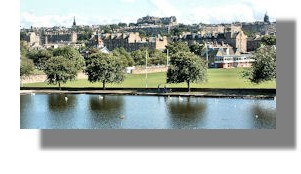
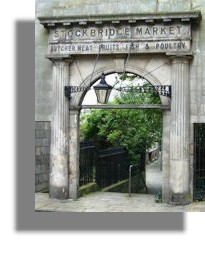
I spent my childhood/adult days (1942-1966) living in Stockbridge, Edinburgh (see graphic on the right of Stockbridge Market © Kim Traynor via Wikimedia Commons ). Looking back, what a wonderful place to grow up. We had the vastness of Inverleith Park, The Pond (see picture on the left, © Alan Stewart via Wikimedia Commons ) where people used to sail their model yachts, fish for minnows and skate in the winter if the pond froze over.
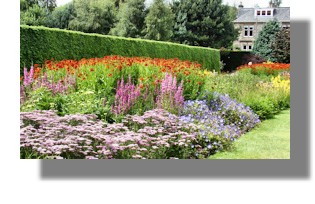
Then there was the Rose Garden to visit and watch the beautiful swans in the pond on their return each year. I used to love feeding them (but now realize bread is not the correct choice of food). We had the Royal Botanic Gardens (pictured on the left), Glenogle Baths in "the Colonies" area (picture on the right © Kim Traynor via via Wikimedia Commons ), the Movie theatre (The Savoy if my memory serves me correctly) and then the Grand near St. Stephens Street where my Grandfather took me to my first movie – Bambi. All this within 5-10 minutes of our house which also was right in the heart of Stockbridge Shops.
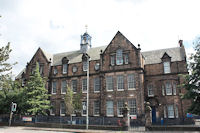
I went to Flora Stevenson’s School in Comely Bank (picture of the school © "Stephencdickson" via Wikimedia Commons). Our family owned a butcher shop in the Learmonth area and of course I used to pop in to see my Gran and Dad and Uncle both going to and from school. Often ended up delivering butcher meat to the customers. There was a Fruit Shop opposite our shop and I worked there on Saturdays for 2/6d ("half a crown in "old" money or 12.5 pence in today's decimal currency) for the day.
Our yearly holiday was (to a foreign country as someone else mentioned) to Kinghorn in Fife (graphic © Paul McIlroy via Wikimedia Commons). Thinking of the packing, going to the train station,train ride and arriving at our destination still returns that warm and exciting feeling I used to have, not to mention all the happy memories of that quaint little town. I immigrated to Canada but Scotland will always be home for me!
Maureen, now in Gibbons, Alberta,Canada,
Lots of Different Games and Things to Do
As children, we seemed to have lots of activities, There was a very big lawn bowling club with three greens, and at the bottom a swing park (also known as the “Swingy”). It was a huge rectangle, and it was surrounded by trees, a metal fence, and then surrounded by tenements on all sides....Kids would play “Kick the Can”....Rounders, etc, and if the ball went into the lawn bowling club, the greenskeeper would come running over, to threaten us kids....with “he would skin our livers”....I used to wonder, just how would he do that.....so we just all laughed, as he was our friend..... Graphic of a lawn bowling club © Chris Upton via Wikimedia Commons)
Close by, was the Church... where many of our activities took place.....Sunday School, Choir practice, Christian Endeavour, “Band of Hope” (Bandy Hope..), as well as Concerts we would put on ourselves...and the many wonderful caring people, who would come and talk to all the children, at these different activities, not so much preaching religion..as just telling stories of different people in different times....always so interesting...and sometimes very funny.....and looking back they also brought in having faith, even in these very difficult times......
Irene, British Columbia Canada
Guns
In the 1940s and 50s when I grew up there was a constant stream of Western featuring such heroes as Roy Rogers, Gene Autry, Hopalong Cassidy, The Lone Ranger and Marshal Matt Dillon and War movies with John Wayne and Audie Murphy in our cinemas. So conflicts and guns were a major part of the world that we saw illustrated. And that spilled over into the sort of games that we boys played in the street or in our gardens. I certainly had a series of toy revolvers, some of which could fire "caps" - a roll of paper with small disks of explosive compounds that gave a loud bang and a puff of smoke when the firing hammer hit them after pulling the trigger. I always found that the mechanism for moving the cap forward to the next cap was often unreliable!
Not long after WWII had ended I recall getting a wooden gun shaped like a machine gun. By turning a serrated wheel with a handle which then rattled past a fixed piece of wood. It simulated the sound of a machine gun firing at speed!
Much later, I got an "air pistol" which could fire darts or metal slugs. That was used more for firing at a target board (often a darts board) rather than for imagined gun fights. Air pistols could do real damage if the dart or pellet hit someone in the face!
Scottie, Glasgow
Skipping Ropes (Jump Ropes in American English)
While guns were very much the domain of boys, skipping ropes were used almost exclusively by girls - either the shorter individual ropes where the aim is to jump over the rope as it is it swung round or the longer rope held by two people, one at each end. The other participants run it at the right moment and jump over the rope at its lowest point and without interrupting the rotation of the rope. Such playground games are often accompanied by nursery rhyme songs. While the boys played football in the playground at break times, the girls got their exercise jumping over skipping ropes. (The graphic of girls skipping is via Wikimedia Commons).
Scottie, Glasgow
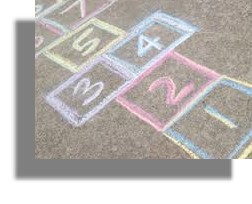
Hop-Scotch / Peevers
Hop-Scotch (usually known as "Peevers" in Scotland) was played on a "court" which was drawn on pavements, school playgrounds and many other flat surfaces. The court consisted of squares or rectangles numbered in sequence. The first player slides a marker (a stone or a shallow round tin for example) into the court. It has to come to rest within the court but not touching any of the lines. There are many local variations both to the design of the court and the manner of moving through it but basically each player hops through the course moving the marker to the next square, again without it touching any of the lines and without losing balance. When I was a youngster at school the game was played mainly by the girls so I never really got to know the finer points! I see from the playground of our local primary school that the game is still played by today's children.
Scottie, Glasgow
Football (Soccer)
Although rugby was (and is today) played at some schools, the sport most often found on the playing fields or the school playground or the street for that matter, has always been football (that's the one that's played with a totally spherical ball rather than an elongated one). In an informal game of football in the playground or the street, the goal posts had to be anything that came to hand - a tin can or someone's jacket. And with no net to stop the ball (usually a much smaller one than the regulation football) there were frequent disputes about whether or not a goal had been scored (made worse by rarely having anyone willing to act as referee!)we raced around getting lots of exercise and returning to the classrooms somewhat sweaty and out of breath! (The graphic of a football here is via Wikimedia Commons).
Scottie, Glasgow
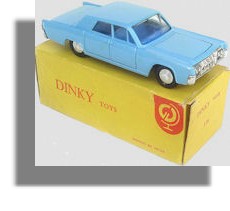
Dinky Toys
Dinky model cars and trucks were not the only ones available but for a long time they were certainly the most popular and sought after. Over the years I built up large collection of these - many of mine had chipped paintwork through constant playing with them on the floor. They were manufactured from 1935 to 1979 (with a gap during WWII). The company producing them also made the "Hornby" train sets and the cars were initially created as track-side accessories. After the war they produced a large range of die-cast model aircraft but my interest in aviation came along later (at which stage I began with Airfix plastic construction kits) and I don't recall having any Dinky model aircraft. The Dinky factory couldn't compete with mass produced toys made in lower wage countries and closed down in 1979. Its competitors like Corgi and Matchbox struggled on for a few years beyond that. The Dinky name is now owned by the US giant Mattel. (The graphic here of a Dinky Lincoln Continental is via Wikimedia Commons).
Meccano Sets
Many boys picked up the basic skills of how to use a screwdriver and a spanner (wrench) as a result of getting a "Meccano" set as a present. In 1901 Frank Hornby, who created the Hornby toy train sets and the Dinky toys, invented and patented "Mechanics Made Easy", based on the principles of mechanical engineering. Later named "Meccano", the model construction kit was made from re-usable, perforated metal strips, plates and girders, with wheels, pulleys, gears, and nuts and bolts to connect the pieces. It not only taught youngsters to use the basic tools but also mechanical principles. While the sets came with diagrams to show how to make particular items, the parts could be used again and again to create unique designs, limited only by imagination - and having enough of the right parts!
The graphic here of a Meccano Model Steam Shovel Excavator is via Wikimedia Commons and is far more complicated than anything I ever attempted!
Scottie, Glasgow
If you would like to contribute your memories of Scotland when you were young, please send your contributions to Scottie@RampantScotland.comReturn to Index of Memory Lane.
